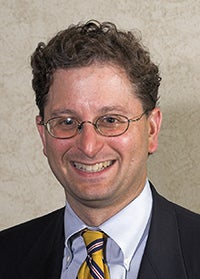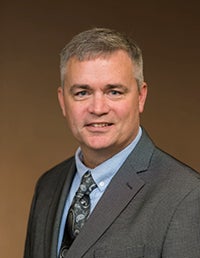Guest Column: Remember the liberators as well as those liberated
Published 9:17 pm Monday, December 3, 2018
Guest Column by Steve Hunegs and Mike Funk

Steve Hunegs
The Jewish Community Relations Council of Minnesota and the Dakotas and Albert Lea Area Schools are proud to partner with each other to bring Manny Gabler to Albert Lea to speak with students about his experience as a Holocaust survivor. Manny will speak at Albert Lea High School and Southwest Middle School on today. Thank you to Southwest Middle School’s Wendy Greenfield for reaching out to the JCRC to invite Manny to Albert Lea.
Manny’s presence in Albert Lea is profoundly appropriate and timely given the fact that the 80th anniversary of Kristallnacht recently occurred on Nov. 9. As documented by the U.S. Holocaust Memorial Museum, on Nov. 9-10, 1938, Nazi leaders unleashed a series of pogroms against the Jewish population in Germany and recently incorporated territories. This event came to be called Kristallnacht (The Night of Broken Glass) because of the shattered glass that littered the streets after the vandalism and destruction of Jewish-owned businesses, synagogues and homes. Manny’s family fled Germany in the 1930s.
The Kristallnacht accelerated a process of Nazi terrorism towards Jews, which meant the implementation of the Final Solution under the cover of World War II. The violence of the Kristallnacht shocked the world. According to the late historian Lionel Kochen, in Germany and Austria, 91 Jews were murdered; 30,000 were sent to concentration camps; 1,000 synagogues burned; and 7,000 Jewish businesses destroyed. President Roosevelt commented at a press conference: “I could scarcely believe such things could occur in a 20th century civilization.” The United States recalled its ambassador in Berlin in protest.

Mike Funk
In Minnesota, Catholic and Protestant congregations united in prayer from Nov. 18-20, 1938. The Minneapolis Journal opined about Germany that a “horrid infection is sweeping the land.” The St. Paul Pioneer Press compared Germany’s “terrorism” towards its Jews as a reversion to the Middle Ages. The Cowles family-owned interventionist Minneapolis Star warned only a rearmed United States could safeguard the Americas from Nazism.
Despite sympathy for the plight of German and Austrian Jews, little was done to help. The Wagner-Rogers Act, which would have admitted 10,000 German children to the United States, never even received a committee vote. A leading Jewish statesman of the day remarked ruefully: “There are two sorts of countries in the world, those that want to expel the Jews and those that don’t want to admit them.”
Without refuge, the Nazis murdered six million Jews as well as the Roma people, homosexuals and the disabled in the killing fields of the Einsatzgruppen or the death camps and concentration camps. Only the gargantuan war effort of the United States as the “Arsenal of Democracy” and the combined might of the Allied armed forces destroyed Nazi Germany, liberated occupied Europe, and ended the Holocaust.
As “Transfer of Memory” writer, Lili Chester, documented about Manny Gabler’s family history, by 1937, it was obvious to Simon Gabler (Mr. Gabler’s father) that he and his pregnant wife could not stay in Germany. As Hitler’s plans to make Germany judenrein “cleansed of Jews” progressed, they knew that they would either have to leave the country or they would end up in a concentration camp. So, their journey began. From Chemnitz, Germany, to Milan, Italy, where baby Manny was born, on to Genoa and finally to the only escape possible for refugees without travel documents: Shanghai, China.
From 1937 to 1941, the open port of Shanghai allowed more than 18,000 undocumented Jews seeking refuge from Nazi Germany to temporarily settle in the Hongkou area of the city. There, a one square mile unwalled ghetto was set up to house the refugees.
When the family landed in Shanghai, Manny was only 1 year old. His memories of the war come from his nine years living in Hongkou. Living conditions were harsh, but “we lived surrounded by equally poor Chinese.” Food was scarce for both the Jews and the Chinese. It was a common sight to see bodies of Chinese babies who had died during the night lining the street as he walked to school in the morning.
When you live through an experience like this, “I think you get a really deep sense of who you are. There is a satisfaction in just knowing that I have survived and done OK.”
With Veterans Day having just passed in November, indeed, we should recall the contributions and sacrifices of the Albert Lea area during World War II. As Sam Wilmes recently reported in the Albert Lea Tribune, Arthur Christiansen, a native of Freeborn, helped to liberate three concentration camps and fought in the Battle of the Bulge. Christansen’s photo now hangs in the U.S. Holocaust Memorial Museum in Washington, D.C. Approximately 84 soldiers from Freeborn County lost their lives, according to U.S. Army records.
Some 73 years after VE Day, we remember and honor the liberators and the liberated.
Steve Hunegs is the executive director of the Jewish Community Relations Council of Minnesota and the Dakotas. Michael Funk is the superintendent of Albert Lea Area Schools.

